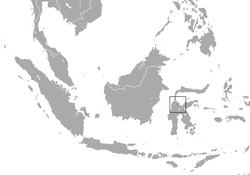| Mossy forest shrew | |
|---|---|
| Scientific classification | |
| Kingdom: | Animalia |
| Phylum: | Chordata |
| Class: | Mammalia |
| Order: | Eulipotyphla |
| Family: | Soricidae |
| Genus: | Crocidura |
| Species: | C. musseri |
| Binomial name | |
| Crocidura musseri Ruedi & Vogel, 1995 [1] | |
 | |
| Mossy forest shrew range | |
The mossy forest shrew (Crocidura musseri) is a species of shrew native to Indonesia.
